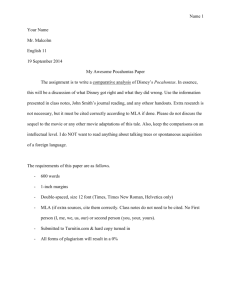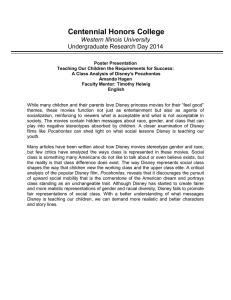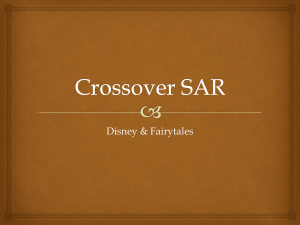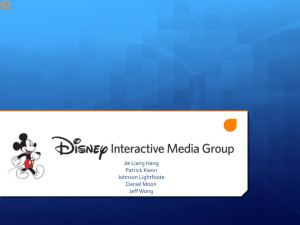IS THERE SEx promotions IN DISNEY MOVIES??
advertisement
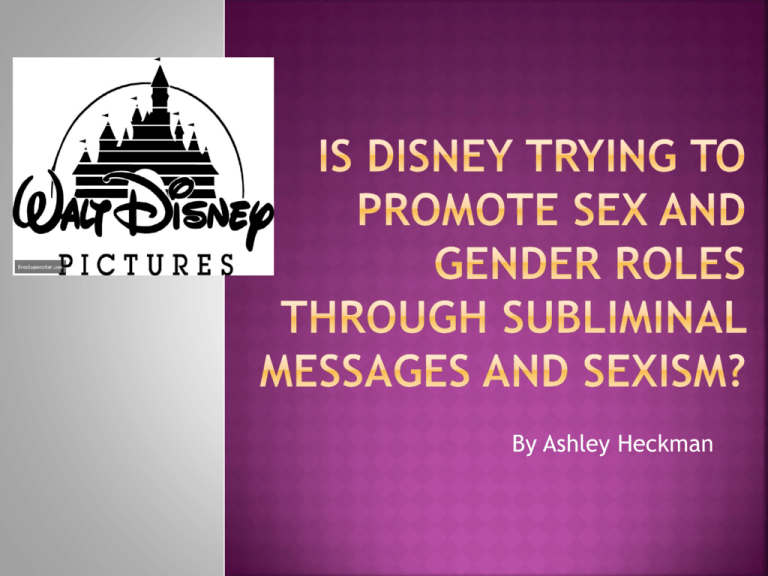
By Ashley Heckman SOME EXAMPLES OF SUBLIMINAL MESSAGES http://www.youtube.com/watch?v=1Xm1V9xfjU&feature=related Shortly after the scene in The Lion King when Simba, Pumbaa, and Timon look at the stars and discuss what they are, Simba flops near the edge of a cliff. Some observers think the cloud of dust he disturbs forms the letters S-E-X. Others suggest that the letters are actually supposed to be S-F-X, inserted by a special effects team member. The letters are visible if you know what to look for, but it's impossible to say if they were animated intentionally. In the original Rescuers movie, as Bernard and Bianca fly on Albatross Air, a naked woman briefly appears in an apartment window in the background. This is one of the few verifiable rumors. In 1999, Disney was forced to recall its home video release when these hidden frames were discovered. The original promotional poster for the movie and the cover of the VHS release featured a shimmering castle. Upon closer examination, one of the castle's towers appears to look like a penis. Some were sure this was an intentional sexual message. In an article on the veracity of these hidden message rumors, Snopes.com interviewed the original creator of the promotional materials; he claims that it was merely the accidental product of a late night at work. In a castle with spires that are already phallic in nature, it was only natural for one to look a bit more like the male genitalia. However, The Little Mermaid is the source of not one, but two persistent penis-based rumors. During a wedding scene, as a disguised Ursula is about to marry Prince Eric, many viewers claim that the minister has a visible erection. While it's true that the minister displays a bulge below the belt, it's actually one of the minister's knobby knees The nature of animation makes it relatively easy for someone to slip a visual joke into a film. One second of movie time requires 24 frames of animation. A single frame would produce a slight blip on the screen, only recognizable on a subliminal level. An animator looking to insert a quick joke or make his own mark on the production could add something extra to a frame and no one would be the wiser. In fact, it's impossible to know how many studio employees might have done exactly this over the years. However, the advent of home video made it possible for viewers to pause any scene and to catch bits of muttered dialogue they might not have heard in the theater. These hidden jokes weren't so hidden anymore. Cinderella- Easy; girl is useless and wishes desperately for Prince Charming; life doesn't start until he comes into her life; also, her step-sisters are "ugly girls" and they are "evil;" note how neither of them have blue eyes or blonde hair or exhibit housewife skills; blatant sexism right there and then. Thus, to be successful in life for a girl, you must be beautiful and be a great housewife and wait around for a strong man to sweet you off your feet? Sleeping Beauty- Okay... so, apparently, girls are idiots (Aurora pricking finger= Eve picking Fruit of Knowledge), wait for Prince Charming (yes, because I just sit at my window everyday and wait for the guy who's never going to come and are well... useless. Great depiction of a female right there. All the female characters in these films are ultimately subordinate to males and define their power and desire almost exclusively in terms of dominant male narratives. The princesses are usually shown as beautiful, they have long hair, fancy outfits, and big innocent eyes. For example, Pocahontas is made over historically to resemble a shapely, contemporary, high-fashion supermodel. Pocahontas's character, like that of many of Disney's female protagonists, is drawn primarily in relation to the men who surround her. Also, as represented by this picture, there is definitely a race element with Disney princesses. As feministing wondered, where are Pocahontas, Mulan and Disney’s newest princess, Tiana? Sure there’s sexism, but there’s a heck of a lot of racism, too. http://www.youtube.com/watch?v=pWc1e3N bc2g&feature=related Yes, people are complaining that there is only one girl toy in the story (Jessie). The thing is, there was a boy that owned the toys. Just look at Disney's line-up, one film after another is about a helpless princess needing a man to get her out of a nasty situation, ending with the two falling in love and the woman giving up whatever life she had before. Most of these movies teach boys that all girls want is a handsome man with lots of money. Not really an inspiring message. But "Toy Story" isn't based on archaic fairy tales -- it's an original idea. While not fully politically correct, it's a stride in the right direction. So, maybe toy story is a good thing for disney. http://www.freeonlineresearchpapers.com/sexis m-at-disney http://forums.boajjang.com/index.php?showtop ic=107052&st=15 http://movies.lovetoknow.com/wiki/Hidden_Me ssages_Found_in_Disney_Movies http://www.youtube.com/watch?v=1Xm1V9xfjU&feature=related http://www.youtube.com/watch?v=pWc1e3Nbc2 g&feature=related –video 2 http://thefbomb.org/2009/10/the-disneyprincesses-and-sexism/ http://www.cnn.com/2010/SHOWBIZ/Movies/06 /28/toy.story.three.sexism.stereotypes.tf/index. html
